By Victor Kamenir
On July 22, 1941, exactly one month after invading the Soviet Union, German aviation conducted its first air strike on Moscow. Squadrons of German bombers fought through the swarms of Soviet fighters, searchlights, and air defense artillery barrages to drop over 100 tons of bombs on the Soviet capital. Even though the damage to the city was minor, Soviet Premier Josef Stalin could not allow the attack on his capital to go unanswered.
The war was going badly for the Soviet Union, and Stalin needed some symbolic act to raise the morale of his people. With this in mind, he ordered a retaliatory air attack on the German capital of Berlin to demonstrate to the Soviet population and the rest of the world that the Soviet Union was still very much in the war.
However, as the Red Army continued steadily retreating under the German onslaught, the distance from the front lines to Berlin stretched to over 600 miles. With the airfields of the Red Air Force relocating farther and farther east, this placed the German capital just out of reach for the majority of Soviet long-range bombers. The Soviet Navy turned out to be in a unique position to carry out Stalin’s orders, and headquarters staff of the Naval Air Forces under Lt. Gen. Semyon F. Zhavoronkov came up with an ambitious and extremely dangerous but marginally workable plan.
Operation B
Since the annexation of the small state of Estonia in 1940, Soviet forces had garrisoned the Moonzund Archipelago, located in the Baltic Sea west of the Estonian capital city of Tallinn. From Saaremaa, the main island of the Moonzund Archipelago, Berlin was roughly 550 miles and under four hours of flight time away. With precise planning and preparation, Naval Ilyushin DB-3 medium bombers could fly to Berlin and back, with less than 20 minutes of fuel remaining upon return. Any deviation off course, equipment malfunction, or extension of flight time could force the bombers to land in the water or in occupied territory.
The closest friendly territory on the mainland was a small and rapidly shrinking Soviet beachhead around Tallinn, a major base of the Soviet Baltic Fleet. Saaremaa Island featured two dirt airstrips. One was located roughly in the center of the island near the village of Kagul, and a second, smaller strip was near the village of Aste to the southeast. A squadron of old Polikarpov I-153 “Chaika” biplane fighters was stationed at Kagul. Neither runway was long enough at the time to accommodate the long-range bombers but could be extended without much difficulty.
General Zhavoronkov presented his plan to his superior officer, commander of the Soviet Navy Admiral Nikolay G. Kuznetsov, who approved the proposal and set up a meeting for the two of them with Stalin. At the meeting on July 26, 1941, Stalin approved Zhavoronkov’s plan and placed the general in command of the effort dubbed Operation B for Berlin.
Using Torpedo Bombers for the Task
General Zhavoronkov selected the 1st Torpedo Bomber Regiment from the Baltic Sea Fleet to provide the majority of personnel and aircraft for the mission. Additional aircraft and personnel would come from an Army aviation regiment. At the start of the war, the Red Air Force was not an independent service, but a subordinate force with the Army and Navy. Hence, its full name was the rather cumbersome Military Air Forces of the Workers’ and Peasants’ Red Army (VVS RKKA).
The 1st Torpedo Bomber Regiment was an experienced unit with many of its pilots having participated in the Winter War of 1939 with Finland. After the German invasion, the regiment had been constantly engaged since June 24, the third day of war, and had suffered heavy casualties in the process. Flying sometimes three to four missions a day, mainly against ground targets, the regiment experienced heavy strain on men and machines. Ironically, the regiment’s home base near Leningrad was close to a small village called Bezzabotnoye, meaning “carefree place” in Russian. Its commander, Colonel Evgeniy N. Preobrazhenskiy, an experienced pilot and officer, was placed in charge of flight operations, with General Zhavoronkov in overall control.
The 1st Torpedo Bomber Regiment was equipped with several models of DB-3 medium bomber, mainly upgraded DB-3F and torpedo adapted DB-3T versions. Depending on a particular aircraft’s configuration, it carried a crew of three or four consisting of pilot, navigator, and one or two gunners, one of whom doubled as radio operator. A further improved version of this aircraft, Dal’niy Bombardirovschik, meaning “long-range bomber,” was redesignated IL-4 in 1942 in honor of its designer, Sergei Ilyushin. This twin-engine aircraft, comparable to the German Heinkel He-111 bomber, remained the workhorse of the Red Air Force’s long-range aviation during World War II, with over 6,200 machines produced. The aircraft’s two M-87B radial engines had a service life of up to 150 hours before an overhaul was needed. However, the regiment’s high tempo of operations prevented adequate maintenance from being performed on its engines. This, coupled with the distance involved in the round-trip flight to Berlin, reduced the aircraft’s lift capacity to only 500 kilograms (1,100 pounds) of bombs, half their nominal payload of 1,000 kilograms (2,200 pounds).
Colonel Preobrazhenskiy, his political deputy Grigoriy Z. Oganezov, and chief navigator Captain Pyotr I. Khokhlov, selected a task force of 30 crews and 20 aircraft plus approximately 200 technical support personnel for Operation B. After three days of hasty preparations and last-minute repairs, the task force took to the air on August 4, on the way to Saaremaa Island.
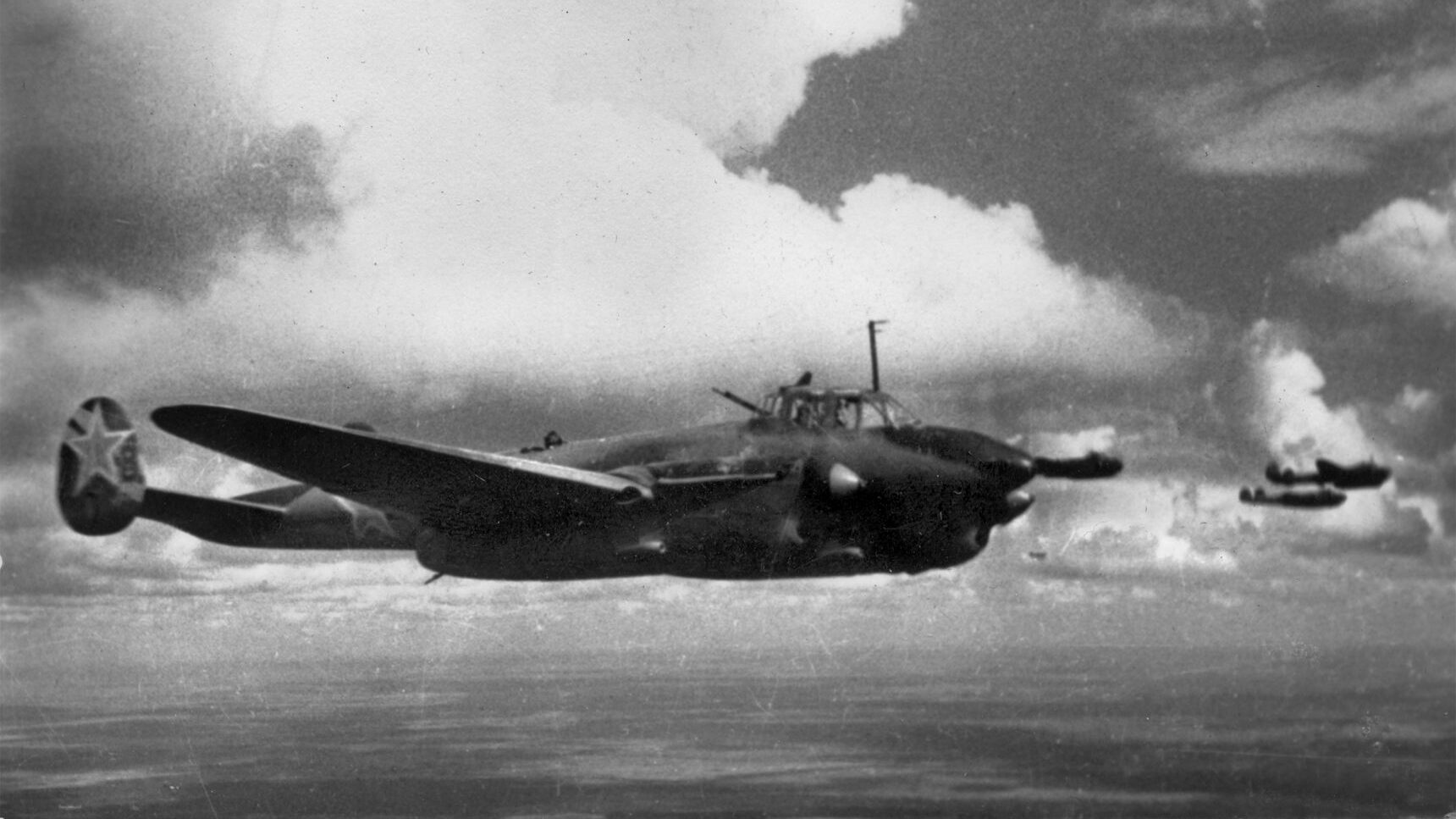
Utmost Secrecy
Planning for the mission was conducted in conditions of such utmost secrecy that the pilots and navigators did not know their destination at takeoff but were required to follow Preobrazhenskiy’s instructions while in flight. General Zhavoronkov was on board the lead aircraft to oversee operations in person at Saaremaa. Technical support personnel, along with their equipment, aircraft fuel, and bombs, were ferried over by ship.
Kagul airfield, the new home of Preobrazhenskiy’s task force, had just been completed in the spring of 1941. Its grassy runway was located in a large meadow surrounded on three sides by Estonian homesteads and bordered on the fourth by an elm forest with many large boulders scattered in front of the tree line. Situated in an exposed forward position, the airfield was vulnerable to German air attacks, defended only by four antiaircraft batteries.
The Moonzund Archipelago, which consists of four large islands and scores of smaller ones, was garrisoned by roughly 25,000 Soviet troops who guarded nearly 500 miles of shoreline. Multiple west-facing strongpoints were established to control the passage between the Baltic Sea and the Gulf of Riga. Some of the defensive works featured large-caliber artillery, including 406mm guns mounted in naval turrets.
The fighter squadron already based at Kagul had also been heavily engaged since the beginning of the war, with only 15 aircraft remaining of the original 27. Surviving machines were redirected from supporting ground operations on the mainland to flying combat air patrol over Saaremaa Island to protect the long-range bombers. In addition, two Chyetverikov Che-2/MDR-6 floatplanes were assigned to Preobrazhenskiy’s command for reconnaissance and the rescue of pilots downed in the water.
Planners of the upcoming operation understood that once the bombing of Berlin commenced, the Germans, knowing the technical capabilities of Soviet long-range bombers, would quickly figure out where the attacks had originated. Therefore, safeguarding the bombers on the ground became an issue of paramount importance. Merely dispersing aircraft around the airfield perimeter and hiding them under camouflage netting would be insufficient.
Navigating in the Night
By late July 1941, the Moonzund Islands were in an exposed position, within easy reach of German tactical aviation from the Estonian mainland across the shallow and narrow straights. To reduce aircraft vulnerability at Saaremaa, individual shelters covered with camouflage nets would be built next to Estonian homes around the airfield. Two construction battalions immediately set to leveling taxiways to each shelter, filling potholes, and cutting down trees. Once the bombers at Kagul airfield were sheltered and the airstrip extended to 3,600 feet, construction battalions moved to the Aste airfield to similarly prepare and expand an airstrip there to receive the second group of long-range bombers, which would come from the Army aviation regiment. One of the four available antiaircraft batteries was reassigned to Aste airfield as well.
Soviet fliers knew that on approaching Berlin they would face a dense ring of antiaircraft defenses with crews experienced in battling British air raids. A vast array of flak artillery, fighter aircraft, and powerful searchlights reaching to almost 20,000 feet, defended the German capital. Therefore, the heavily laden bombers would have to make the majority of their journey in darkness, placing them over Berlin at the optimal time of between 0100 and 0200 hours. To meet this schedule, the bombers would have to take off between 2100 and 2200 hours and return between 0400 and 0500 hours. To avoid German fighters, the majority of flight time would be at the altitude of 23,000 feet.
Skilled navigators would be crucial for this mission. Flying largely over water at night, they would be denied the use of pilotage, the method of determining the aircraft’s position by visual reference to the ground. Between Saaremaa and the port of Stettin, navigators and pilots would have only the Gotland and Bornholm islands to visually confirm their courses. Therefore, the flight would navigate by dead reckoning, the method of determining position by maintaining a careful account of the time and distance from last known position or point of departure.
Each aircraft was to be assigned a primary target over Berlin and secondary targets over other locations. The main targets consisted of factories involved in war production as well as electrical stations and railroad facilities. Secondary targets were ports along the Baltic coast, such as Stettin, Danzig, and Memel. However, only in the event of technical difficulties resulting in an inability to reach Berlin were the Soviet pilots allowed to divert to their secondary targets.
“Head and Arms Feel Heavy; Apathy”
By early August, as preparations and training were almost completed, five aircraft conducted a trial run over northern Germany. They penetrated enemy territory to within 70 miles of Berlin and turned back without being spotted. On August 3, they conducted a successful practice bombing run on the port of Svinemunde in northern Poland, taking off with the same bomb and fuel loads they would be carrying to Berlin. Now, they just needed a break in the bad weather.
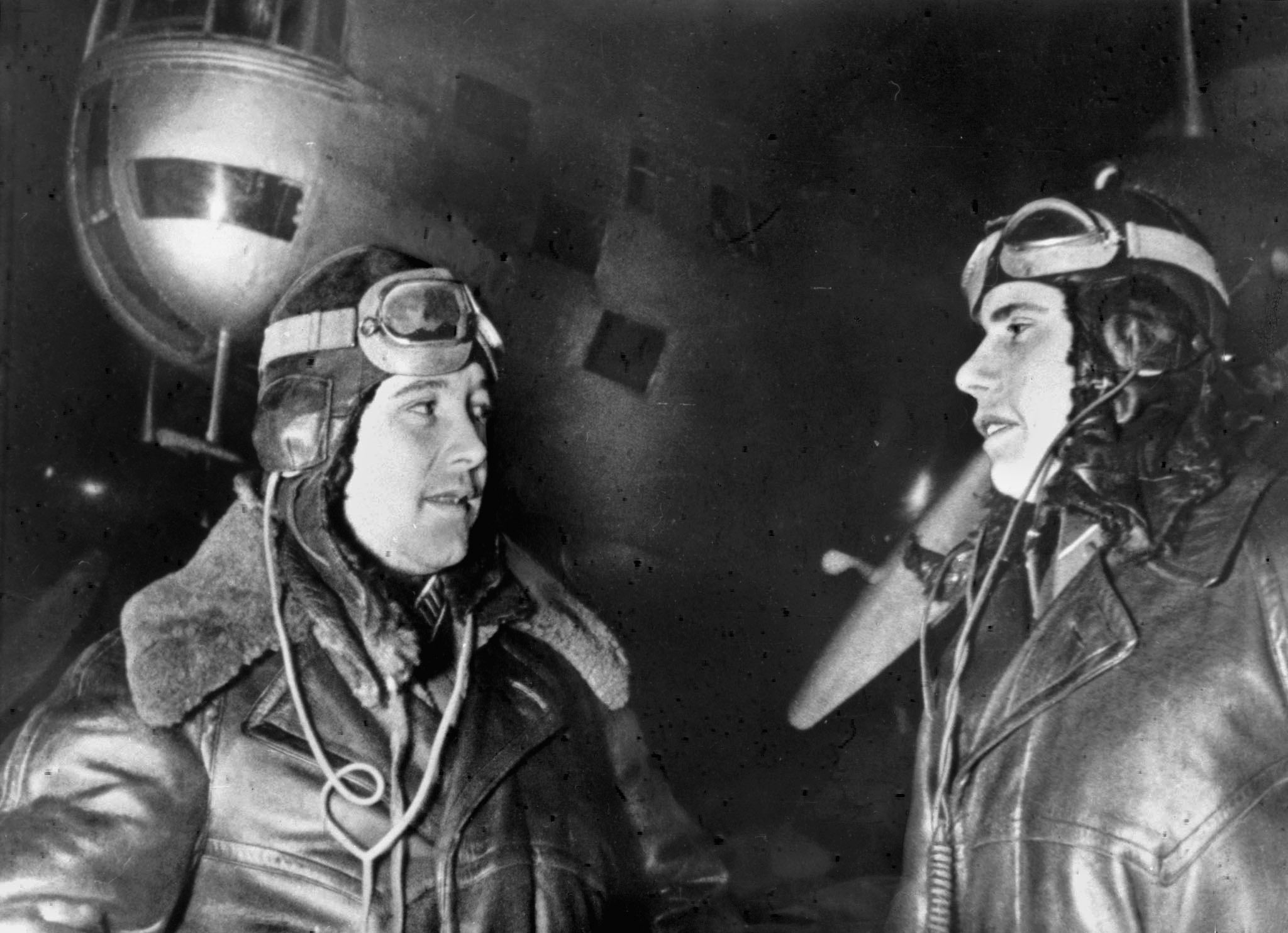
Finally, on August 7 the weather improved sufficiently for General Zhavoronkov to give the go-ahead for the first mission. I-153 fighters took off first to clear the path of any German fighters near the archipelago. Finally, at 2100 hours, 12 aircraft led by Preobrazhenskiy took to the sky.
As the bombers steadily gained altitude, the temperature began to drop and the men put on their fur coats and gloves. By the time they reached the altitude of 21,500 feet, the temperature inside the unsealed cabins had fallen to minus 25 degrees Fahrenheit. Frost covered goggles and instrument displays so quickly that pilots and navigators had to constantly wipe them clean. Two of the three compasses aboard Preobrazhenskiy’s aircraft malfunctioned.
The blacked-out planes flew in total darkness surrounded by extremely thick cloud cover. This was tremendously nerve racking for navigators, who had to rely on their gauges alone to guide the pilots who were flying blind. Thin, oxygen-depleted air at high altitude caused many men to experience bouts of nausea and breathing difficulties, forcing them to put on their oxygen masks. Colonel Preobrazhenskiy himself recalled his ears bleeding.
Navigator Pyotr Khokhlov remembered: “Head and arms feel heavy; apathy. It is difficult to make an extra turn, move an arm. This is the sign of lack of oxygen. We opened the oxygen valve to the fullest. It became better right away.”
Guided by Lights and Landmarks
Finally, the aircraft approached the German coastline near Stettin. Guided by the city lights, Soviet pilots turned their aircraft south on the final leg to the German capital. As the bombers droned on to Berlin, all the men aboard, knowing of the extensive German air defenses, were anxious about the reception they were to receive.
By this time not only had visibility improved, but the Soviet aircraft were also aided by Berlin’s layout. Multiple easily identifiable natural and man-made terrain features stood out from the air: the Templehof Airport, the Tiergarten Park in the heart of the city, lakes, and several bends of the River Spree snaking through the city. Upon reaching Berlin, the pilots were amazed to discover that the German capital was not blacked out. Instead, the Soviet fliers were able to easily pick out their objectives and orienteering marks in the well-lit city. Captain Khokhlov recalled seeing cones of light from headlights of German cars moving on the streets below.
The planes split up over Berlin, each proceeding to its individual objective. Colonel Preobrazhenskiy’s personal target was one of the railroad stations, and he was able to drop his bomb load without being fired upon. However, tail-end planes had to fly in the face of stiffening flak from awakened air defenses. After each aircraft released its deadly cargo, gunners pushed out bundles of propaganda leaflets as well.
In accordance with mission planning, raider aircraft were to maintain radio silence until they crossed the German coastline on the return leg. However, knowing that the people back at the Kagul airfield were anxiously awaiting information about the attack and not wishing to chance being shot down without reporting their mission’s success, Preobrazhenskiy authorized his radio operator to transmit the news. Sergeant Krotenko sent a short message: “I’m over Berlin. Mission completed. Returning.”
As Preobrazhenskiy’s aircraft was crossing from land to water, he saw fires at Stettin harbor. It appeared that one of his aircraft had to abort on the way to Berlin and select a secondary target at Stettin.
A Shock to Nazi High Command
Once back at the base, Colonel Preobrazhenskiy eagerly discovered that all aircraft had returned safely to base. As the exhausted fliers climbed out of their machines, they were surrounded by cheering friends. Shortly after their arrival, the results of their raid were telephoned to Stalin’s office. Stalin issued a congratulatory communiqué to participants of the raid, announcing forthcoming awards and granting 2,000 rubles to every crew member.
The Germans, completely discounting the possibility of the Soviets bombing Berlin, reported the next day that the air raid was conducted by the British. Naturally, the British denied this, stating that no British aircraft operated during the night due to unfavorable weather conditions. Only after the Soviet press agency Informburo announced the raid later on August 9 did the Germans learn the identity of their attackers.
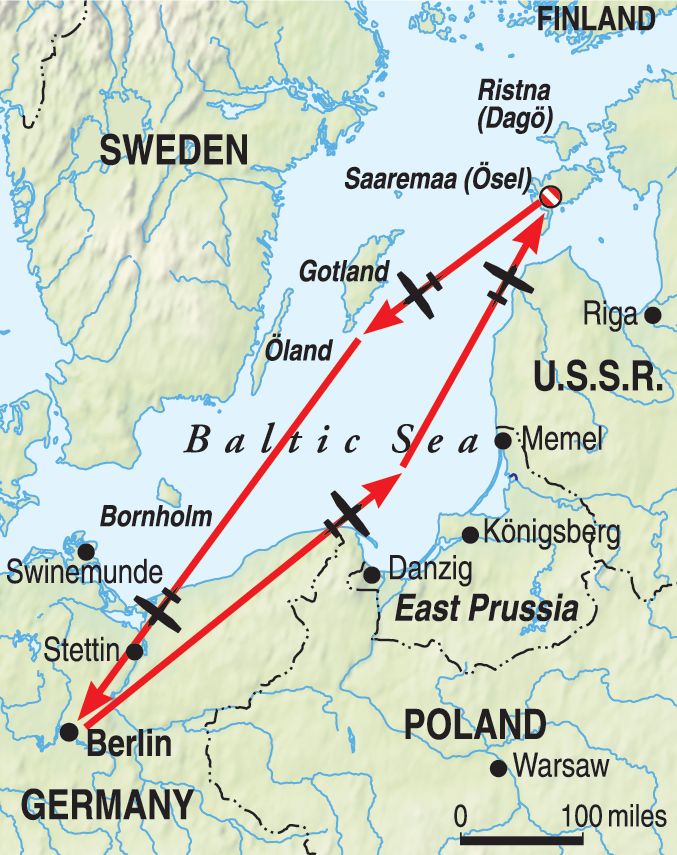
Before the war, Herman Göring, the bombastic head of the Luftwaffe, boasted that no enemy bomb would fall on Berlin. His claims were dispelled in 1940 by numerous British retaliatory attacks on the German capital. Even one French aircraft, a converted Farman NC 223.4 mail plane, managed to drop 1,700 pounds of high explosive and incendiary bombs on Berlin on June 7, 1940.
The slap in the face by the Soviet aviators, which Göring already claimed to be wiped out, was a hard pill for Adolf Hitler to swallow. On August 12, a paragraph in supplemental orders to Hitler’s Directive No. 34 stated: “As soon as the situation allows, enemy air and naval bases at Dagö and Ösel will be eliminated by a combined operation by Army, Naval and Air Forces. It is urgently necessary that enemy airfields from which attacks on Berlin are evidently being made should be destroyed.”
Launching a Second Raid
The second Soviet air raid, during the night of August 8-9, did not go as well as the first one. After 12 aircraft took off for Berlin, several planes developed mechanical problems and had to turn back long before coming within reach of secondary targets. Crossing over water to land at Stettin, Soviet bombers encountered heavy antiaircraft fire from German shore and naval batteries. Once over Berlin, they were met with heavy flak and night fighters equipped with powerful searchlights. One of the aircraft exploded over the city, cause unknown.
Parallel to Preobrazhenskiy’s task force, an Army aviation unit had been prepared for similar missions. The 81st Long-Range Bomber Division under Kombrig (brigade commander) Mikhail V. Vodopyanov was a brand new unit, formed in mid-July of 1941 and composed of two regiments, one equipped with Petlyakov TB-7 four-engine bombers and the other with Yermolayev Yer-2 aircraft. Men and machines were scraped together from various sources to form this unit.
After Colonel Preobrazhenskiy’s naval fliers conducted their first successful mission, Vodopyanov’s unit was rushed to join Operation B before it had a chance to get completely ready. On the night of August 10, a flight of 10 TB-7s and 16 Yer-2s from Vodopyanov’s division prepared to take off from two grassy airfields at Pushkino near Leningrad. Vodopyanov’s route was to skirt the coastlines of Estonia and Latvia and then fly on to Stettin, along a route similar to Preobrazhenskiy’s, a distance of almost 1,680 miles.
Mechanical Difficulties and Air Defenses
The mission went wrong immediately. As aircraft began taking to the sky, one TB-7 bomber lost both engines on one side and cartwheeled into the ground, exploding and killing all aboard. At the other airfield, due to a short runway, two Yer-2s crashed while attempting to take off with loss of life aboard both. Faced with more potential for disaster, General Zhigarev ordered the rest of Vodopyanov’s aircraft grounded, and only those aircraft already in the air, seven TB-7s and three Yer-2s, proceeded toward Berlin.
However, their troubles were only beginning. Due to secrecy, no one advised Soviet air defenses along the Baltic coast about the mission. With unfamiliar four-engine aircraft above, air defense artillery opened fire on Vodopyanov’s aircraft, and several I-16 fighters closed. Vodopyanov’s plane was stitched by friendly machine-gun fire, but no one was hurt. His gunners had to open fire to keep their own fighters at bay.
Of Vodopyanov’s 10 aircraft, only six reached Berlin and dropped their bomb loads, the rest turning back due to mechanical difficulties. With his own plane damaged by German flak over Berlin and fighting for control of his wounded machine on the way back, Vodopyanov was forced to land in German-occupied Estonian territory. It took two days, but Vodopyanov’s entire crew made it safely to Soviet lines.
Not all the crews were so fortunate. On the return leg, Soviet air defenses were still not notified of the bombing mission. As the surviving planes neared Leningrad, they were again met with antiaircraft fire and fighters. Once more, bomber crews had to fire on their own fighters to keep them away. Still, one TB-7 was shot down by Soviet flak and crashed, killing six crew members. A Yer-2 bomber was shot down by a Soviet I-16 fighter. However, all 11 men parachuted to safety. Another Yer-2 was lost without a trace. A TB-7 damaged over Germany lost two engines on the way back and was forced to crash land in Finland. Five crew members died in the crash, and the rest were captured.
Soviet Losses on the Airfield
After the first disastrous attempt, the 81st Long-Range Bomber Division did not fly any more missions to Berlin. Called to Moscow to account for his poor showing, Vodopyanov was critical of the diesel engines his planes were outfitted with. After barely a month in command of the 81st Division, Vodopyanov was replaced on August 17, 1941, by Colonel Aleksandr Golovanov. Embarrassingly, Vodopyanov was kept in the unit and continued flying missions as a common pilot. Eventually, taking into account his distinguished prewar career as an Arctic pilot, he was promoted to major general and quietly moved to a rear echelon administrative posting.
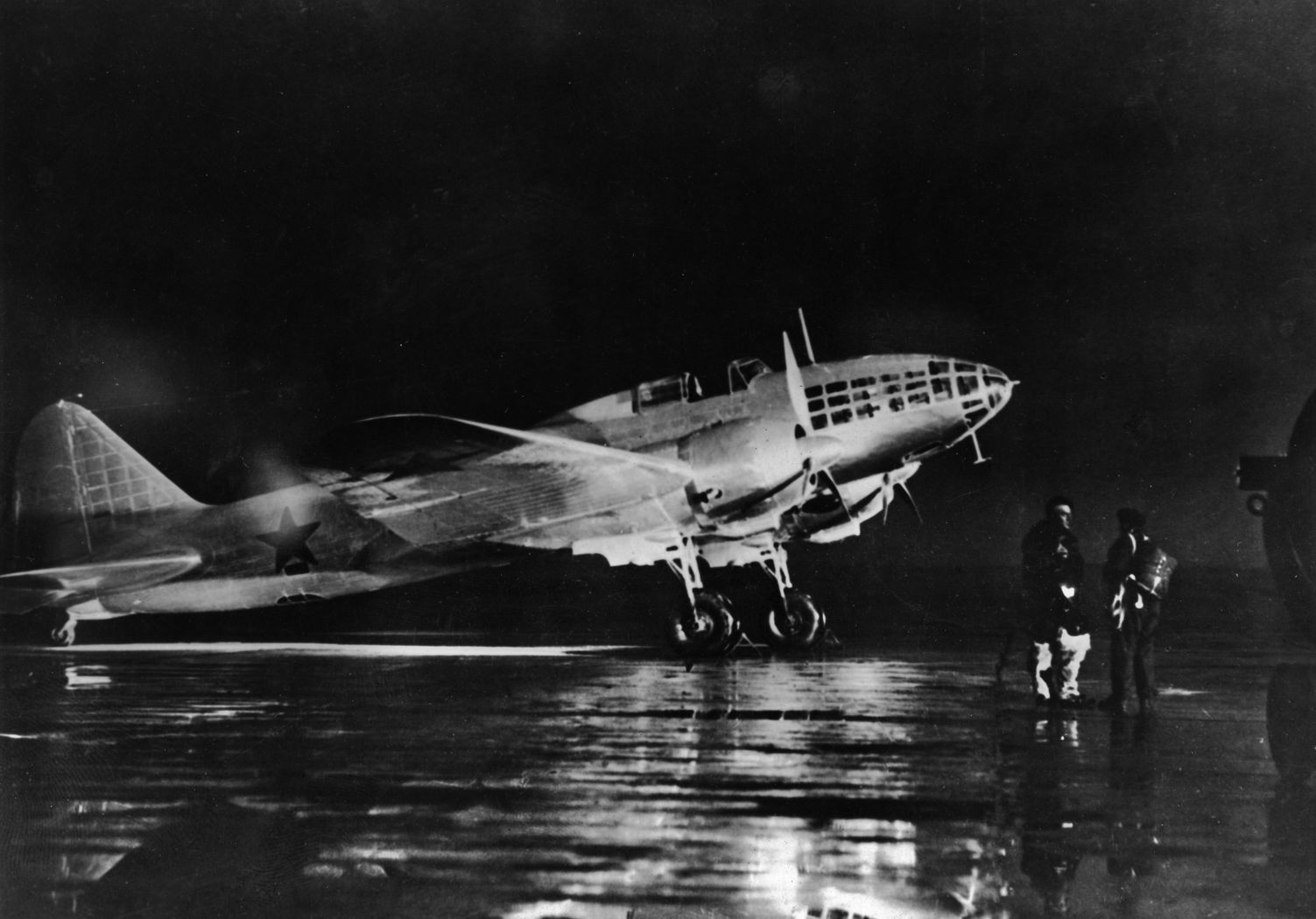
On August 10, the same day as Vodopyanov’s ill-fated raid, 12 DB-3 aircraft from another Army aviation regiment under Major Schelkunov touched down at Aste airfield on Saaremaa, greatly bolstering Preobrazhenskiy’s force.
Shortly after Soviet aircraft took off for Berlin on the third raid, a small group of German planes arrived over Kagul. They dropped several bombs and departed after making several sweeps over the airfield. Luckily, no Soviet aircraft were damaged or personnel hurt, and only minor damage was inflicted on the airfield’s infrastructure. However, the Germans returned shortly after the fourth raid departed and bombed Kagul again, concentrating mainly on the air defense positions. This time, almost 30 ground personnel were killed or wounded with a majority of the casualties coming in the air defense company. One I-153 fighter was also destroyed on the ground. Additionally, Soviet personnel now had to endure occasional sniping from the woods by Estonian nationalists.
Financial Incentives for Communist Pilots
The flights to Berlin continued, with detailed accounts of ordnance dropped on the German capital reported directly to Stalin. The monetary award for crewmen became standardized. Unlike the first raid, when every participant received 2,000 rubles, now only those crew members who actually dropped bombs on Berlin were granted the money. Although it was everyone’s patriotic duty to fight well, monetary incentive awards were given for destruction of enemy equipment or number of missions flown from 1941. For example, a fighter pilot received 1,000 rubles for shooting down an enemy aircraft. Likewise, bomber crews received 500 rubles for bombing important strategic objectives. Crews of naval ships received awards for sinking enemy ships, proportionally divided by rank and duty position between crewmen.
A knocked-out German tank could be worth 200 to 500 rubles to a Soviet tanker, depending on his job. A soldier who knocked out a tank by himself using a grenade received 1,000 rubles. These were significant sums. In comparison, a colonel received approximately 2,100 rubles per month, including combat pay. A private received 17 rubles. Exceptional non-combat performance could also earn monetary rewards.
More Casualties at Kagul
Despite the tremendous efforts and resources expended, Soviet raids were not inflicting significant damage. Too few aircraft carrying relatively small bombs were getting through to Berlin. After the fourth raid, Stalin wanted heavier bombs to be dropped on the German capital.
Upon receiving the new orders, Admiral Kuznetsov attempted to dissuade Stalin, rationally arguing that with the increased weight, the overtaxed DB-3s could not reach Berlin. Stalin was not convinced. During his next meeting with Kuznetsov, the Soviet premier brought in the famous test pilot Colonel Vladimir K. Kokkinaki, who was intimately familiar with the DB-3 aircraft. At the time, the distinguished flier served as the chief test pilot and chief of the main inspectorate of the aircraft industry.
Colonel Kokkinaki was an accomplished pilot, holding multiple records for altitude, payload, distance, and speed utilizing both fighters and bombers. On April 20, 1936, Kokkinaki actually flew a loop piloting a DB-3 bomber. Having worked in the design bureau that created the DB-3, Kokkinaki was considered an expert on the plane. In vain, Admiral Kuznetsov attempted to convince Stalin’s expert that while Kokkinaki was indeed knowledgeable about the DB-3 aircraft, as a test pilot he dealt with the planes in good repair and under optimal conditions. It was quite different with Preobrazhenskiy’s overworked aircraft with worn-out engines.
While the tug of war over increased bomb loads continued at headquarters, the combat routine went on at Kagul airfield. Returning from the fifth raid on August 16, a bomber piloted by Lieutenant Aleksandrov crashed upon landing due to fatigue and oxygen deprivation. Three crewmen, including the pilot, died, and the tail gunner was severely injured. Anther DB-3, its engines damaged by flak, crashed within sight of Kagul, killing all aboard. After this raid the Germans once again bombed the airfield, destroying two more I-153s and heavily damaging the runway.
Attempts to Carry Heavier Bombs
Shortly after the sixth raid on August 18, Colonel Kokkinaki arrived at Kagul to check the progress of preparations for missions with 1,000-kilogram bombs. Many senior pilots, including Preobrazhenskiy, attempted to convince him of the futility of even attempting to take up the heavy FAB-1000 bomb or two FAB-500s. A heated discussion ended up in a shouting match. In the end, Stalin’s wishes could not be ignored, and Zhavoronkov ordered the mission to proceed.
For trial runs, two planes at Kagul were outfitted with one 1,000-kilogram bomb, and the third was loaded at Aste with two 500-kilogram bombs. The lead aircraft at Kagul, under Captain Grechishnikov, could not initially take off. When it finally did, it quickly began to lose altitude. Worried that the large bomb mounted on an external rack under the aircraft would detonate if the plane hit the ground, Grechishnikov ordered his navigator to jettison it.
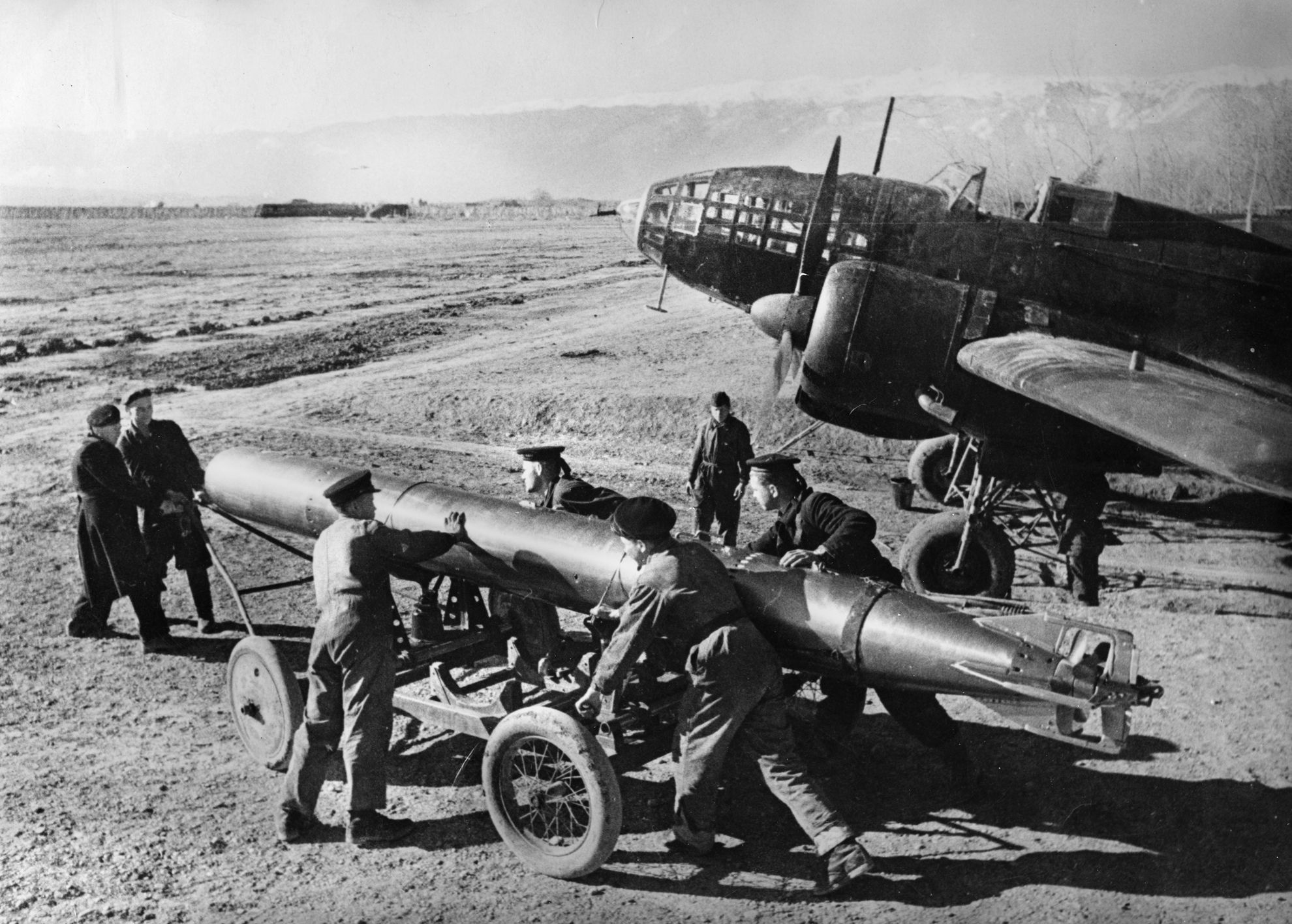
The navigator, Captain Vlasov, barely had time to eject the deadly cargo before the bomber hit the ground, skidded on the grass, and caught on fire. With the fire approaching the fuel tanks, the three crew members in the front section of the plane quickly bailed out. As they sprinted away, they heard cries for help from the fourth crew member, tail gunner Sergeant Burkov, who was injured and pinned in his cupola. Without hesitation, the three aviators returned to the burning aircraft to rescue their comrade. Breaking the plexiglass cupola, they retrieved the injured man and were able to drag him to safety before the aircraft exploded.
Things went more tragically at Aste. Air Force Lieutenant Bogachev, on his first mission to Berlin, was piloting the DB-3 carrying two 500-kilogram bombs on external racks. His plane could not lift, and as it rapidly approached the end of the runway its brakes failed to stop the heavy aircraft. Running out of runway, the plane crashed into the trees. The two bombs detonated, tearing it apart.
An eyewitness remembered: “A deep crater from the two exploded FAB-500s, burning debris from the bomber spread around to tens of meters and among them, on the grass dampened by dirt, bloody dismembered head of Senior Lieutenant Bogachev, mangled unrecognizable corpses of navigator Lieutenant Shevchenko, radio operator and gunner….”
The third aircraft’s attempt was aborted. In the aftermath of these unsuccessful trials, General Zhavoronkov was called to Moscow to report directly to Stalin for debriefing. Anticipating a bad outcome, Zhavoronkov told a friend: “I’m being called in to make a report. I came to say good-bye.” Fortunately, Stalin accepted the explanations, and the general kept his head. Nonetheless, he was recalled to his regular duties, and Colonel Preobrazhenskiy replaced him as the head of operations at Kagul.
Destroying the Taskforce at Kagul
As August drew to a close, operations began to wind down. The Army Air Force detachment, its aircraft in severe need of maintenance, returned to the mainland. Only three naval bombers participated in an eighth mission. Of these, two had to turn back before reaching Berlin due to engine problems. The third returned late and crashed with no survivors in full view of the airfield.
At a staff meeting held on September 1, 1941, Colonel Preobrazhenskiy’s senior advisers agreed that the overworked engines could no longer carry the planes all the way to Berlin. Reluctantly, Preobrazhenskiy gave orders to switch to secondary targets such as Stettin, Memel, and Königsberg. Khokhlov wrote: “Some of the aircraft were out of service. There were shortages of spare parts. Some damaged planes could fly only without the bomb load. Another mission was found for them—air reconnaissance.” Several of the still functional aircraft were reconfigured as torpedo bombers.
On September 6, the Germans hit Kagul with a well-coordinated heavy air attack. After first suppressing air defense batteries, German bombers shifted their attention to the Soviet aircraft shelters near Estonian houses. Wave after wave of German planes hit the airfield, destroying six Soviet bombers and damaging another.
The following day, with only three operational aircraft remaining, Preobrazhenskiy’s task force was recalled to the mainland. Crammed full with over 100 support and technical personnel, the three departing bombers still had to leave many soldiers behind. Several days later, the bomber damaged during the September 6 raid was repaired, and more men were flown out. The rest joined the garrison of Saaremaa Island.
86 Sorties Over Berlin
On September 14, units from the German 42nd Army Corps and Brandenburg Commandos, supported by air and naval assets, launched Operation Beowulf II aimed at capturing the Moonzund Archipelago. Tallinn had fallen on August 28, and there remained no way to evacuate the 25,000 men of the Moonzund garrison. The Germans systematically cleared island after island of Soviet defenders. Saaremaa fell on October 5, with the remaining Soviet naval aviation personnel destroyed near the lighthouse on the southwest tip of the island.
By the time Operation B ended, Soviet bombers had flown 86 individual sorties, with 33 aircraft actually reaching Berlin to drop over 36,000 kilograms (79,200 pounds) of bombs on the German capital. Seventy crewmen and 17 aircraft were lost, including two during the unsuccessful endeavor to lift heavier payloads. Nine pilots and navigators, including Colonel Preobrazhenskiy and Captain Khokhlov, were named Heroes of the Soviet Union.
Aviators of the 1st Torpedo Bomber Regiment continued fighting with distinction throughout the war, paying a heavy price. On September 16 alone, while attacking ground targets, Colonel Preobrazhenskiy’s command lost six aircraft. For its accomplishments in combat, the regiment received the honorific title of “Guards Regiment” in January 1942. Both General Zhavoronkov and Colonel Preobrazhenskiy survived the war, with Zhavoronkov retiring as a Marshal of Aviation in 1950, and Preobrazhenskiy, promoted to major general, replacing Zhavoronkov as commander of Naval Air Forces.
Despite the relatively minor damage inflicted on the Germans during Operation B, this mission was a tremendous boost to Soviet morale at home. This operation could be well summarized by General Sir Arthur “Bomber” Harris, head of British Royal Air Force Bomber Command: “The Nazis entered this war under the rather childish delusion that they were going to bomb everyone else, and nobody was going to bomb them…. They sowed the wind, and now they are going to reap the whirlwind.” n
Victor Kamenir, a former U.S. Army sergeant, was born in Ukraine. Victor is the author of numerous articles and one book, The Bloody Triangle: Defeat of Soviet Armor in Ukraine, June 1941.
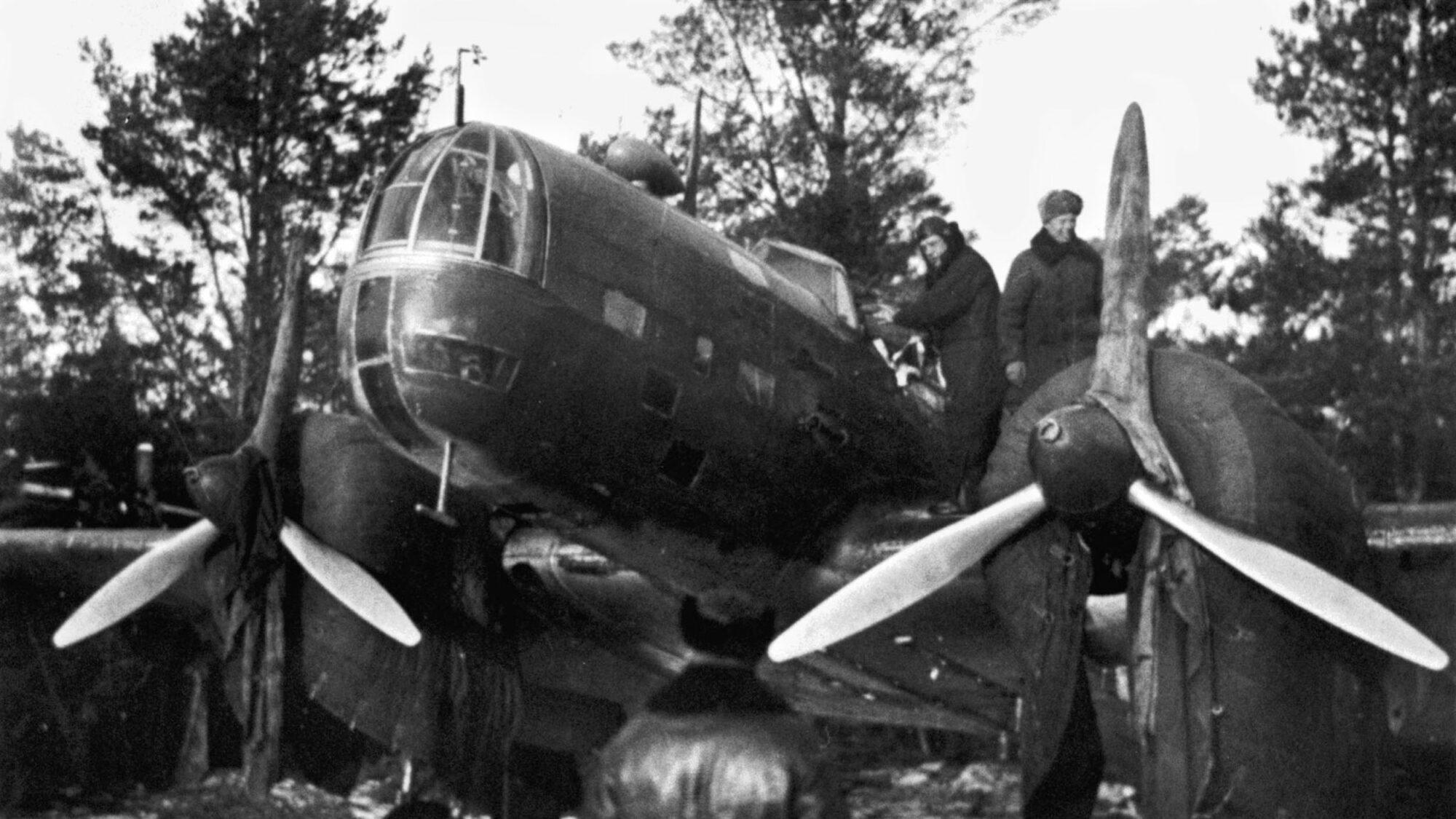
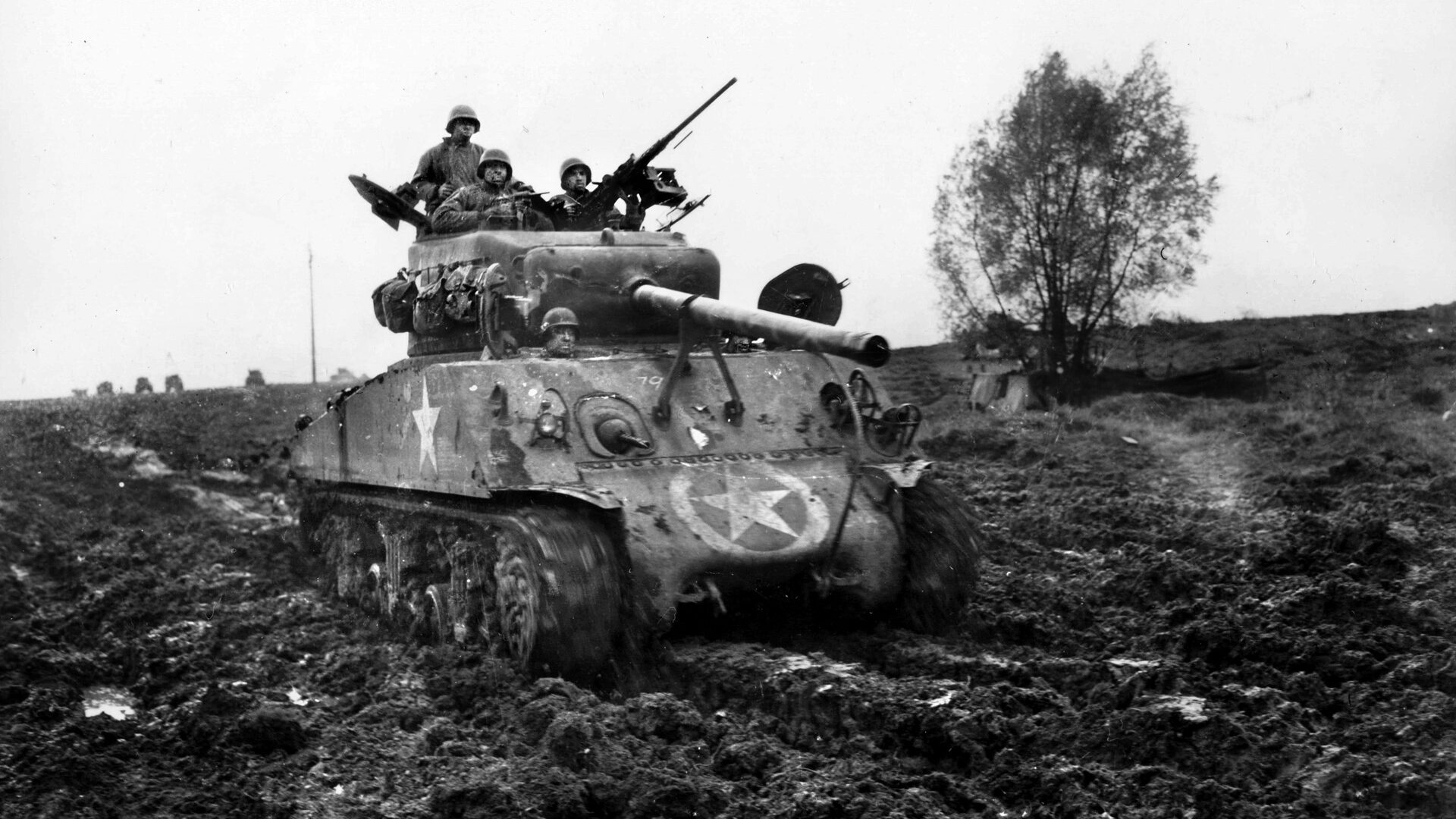
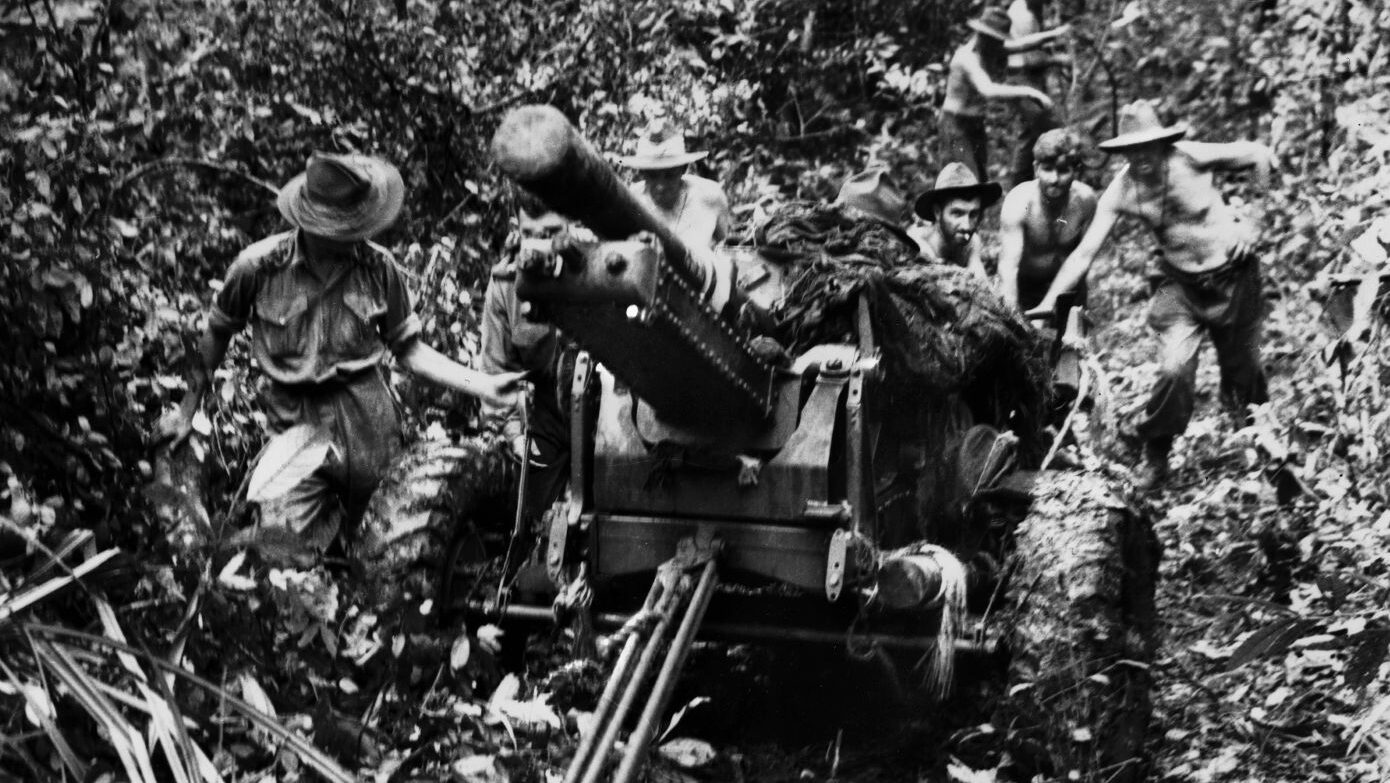
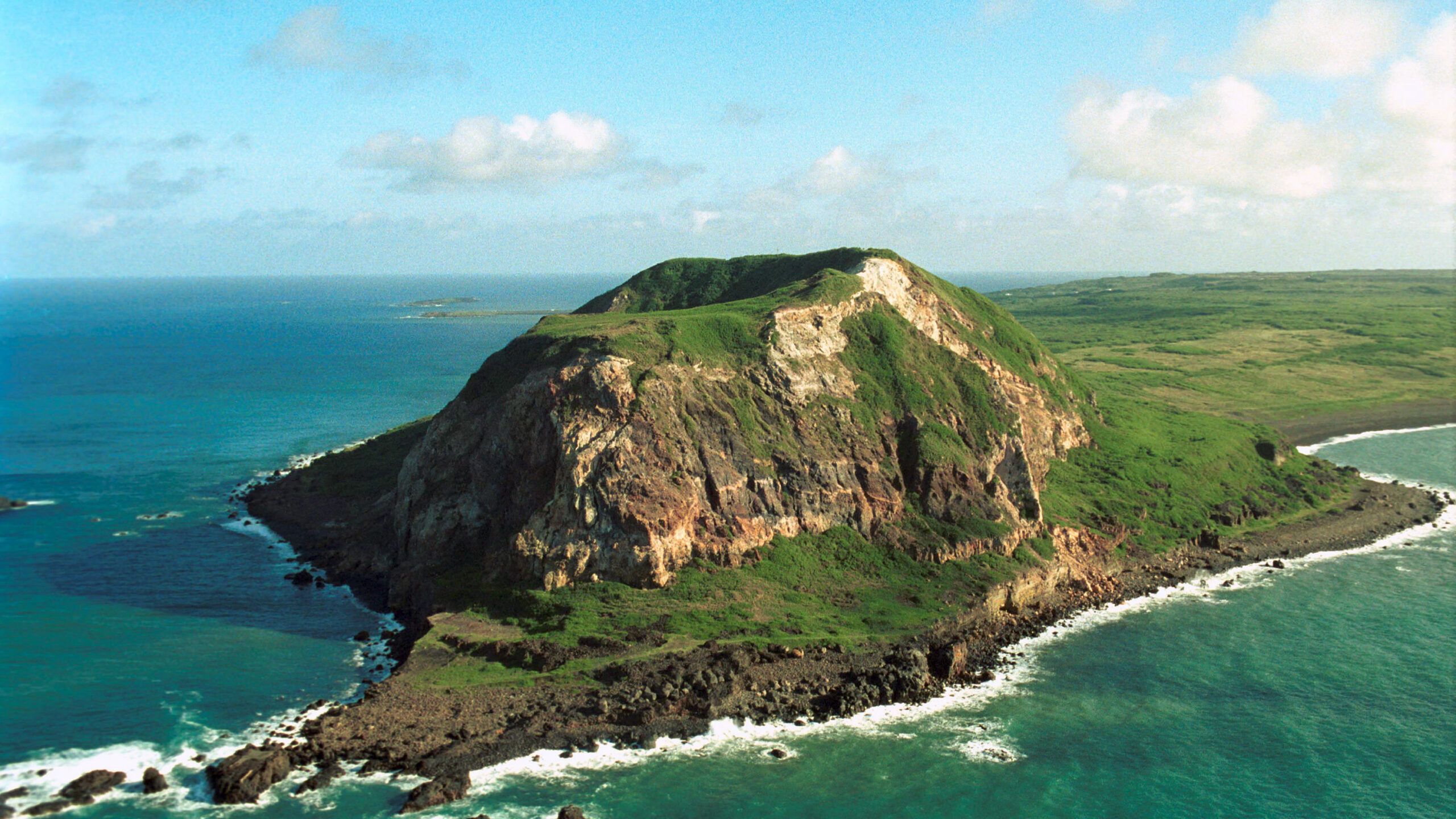


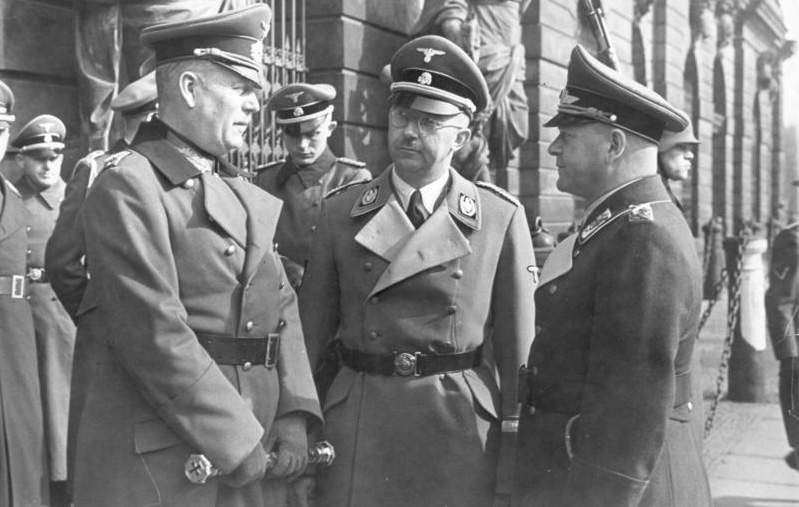

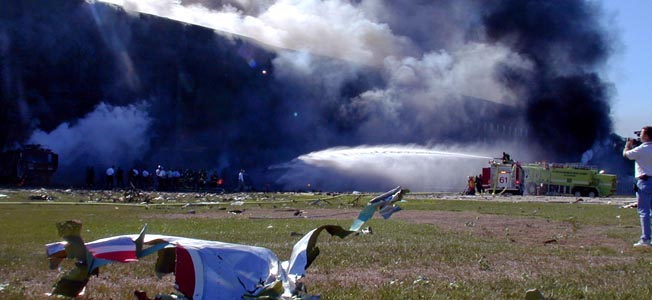
Join The Conversation
Comments
View All Comments